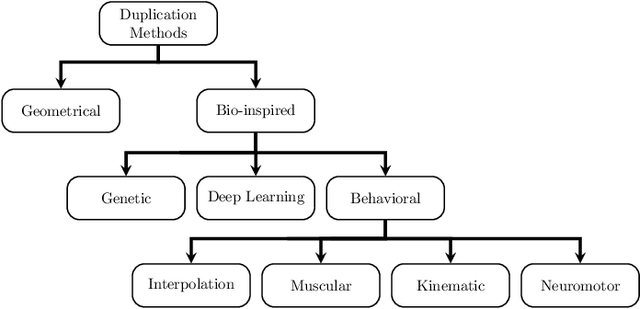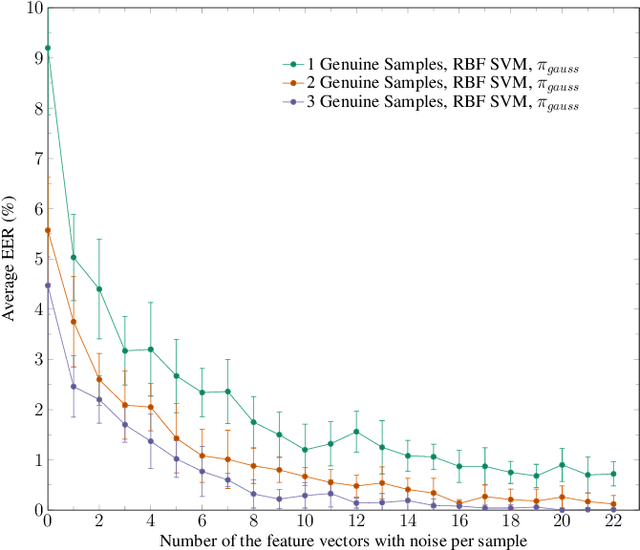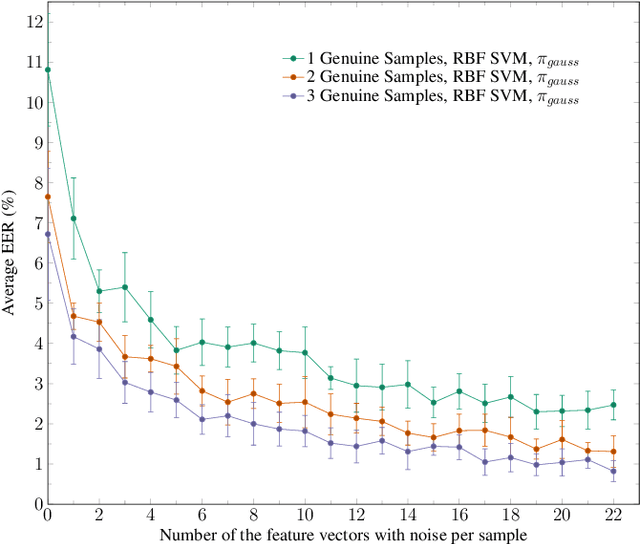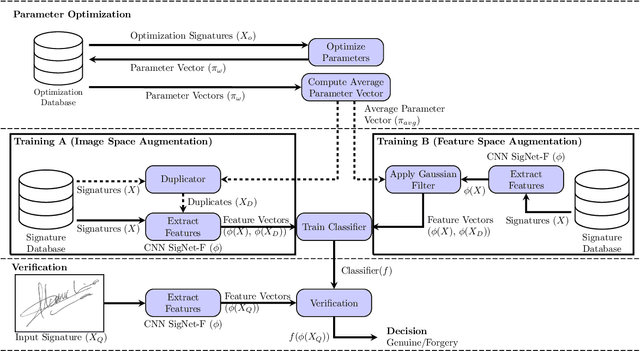Teruo M. Maruyama
Intrapersonal Parameter Optimization for Offline Handwritten Signature Augmentation
Oct 13, 2020



Abstract:Usually, in a real-world scenario, few signature samples are available to train an automatic signature verification system (ASVS). However, such systems do indeed need a lot of signatures to achieve an acceptable performance. Neuromotor signature duplication methods and feature space augmentation methods may be used to meet the need for an increase in the number of samples. Such techniques manually or empirically define a set of parameters to introduce a degree of writer variability. Therefore, in the present study, a method to automatically model the most common writer variability traits is proposed. The method is used to generate offline signatures in the image and the feature space and train an ASVS. We also introduce an alternative approach to evaluate the quality of samples considering their feature vectors. We evaluated the performance of an ASVS with the generated samples using three well-known offline signature datasets: GPDS, MCYT-75, and CEDAR. In GPDS-300, when the SVM classifier was trained using one genuine signature per writer and the duplicates generated in the image space, the Equal Error Rate (EER) decreased from 5.71% to 1.08%. Under the same conditions, the EER decreased to 1.04% using the feature space augmentation technique. We also verified that the model that generates duplicates in the image space reproduces the most common writer variability traits in the three different datasets.
 Add to Chrome
Add to Chrome Add to Firefox
Add to Firefox Add to Edge
Add to Edge